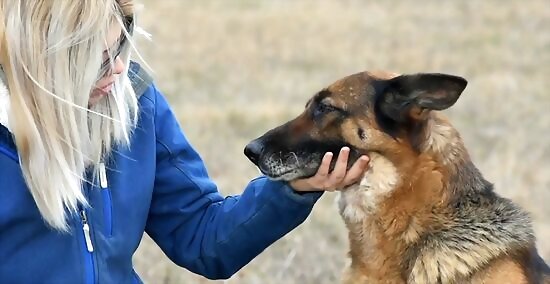
views
Assessing Your Dog's Temperature

Feel your dog’s ears and paws. A dog with fever usually has very hot ears and paws. You can gauge his temperature by using sensitive body parts like your cheeks and the back of your hands over his ears and paws. Are his warmer than yours? Healthy dogs only run slightly higher in temperature than humans. A dog's ears and paws have a lot of blood vessels. When he has a fever, these areas get hot because of the migration of immune cells from the blood into the areas of the body where an infection is taking place. The increase in the circulating immune cells in the blood can manifest as heat in the blood vessels. It is unusual for the left and right ear to be different temperatures. If one ear is warmer than the other, this is usually a sign of a localized ear infection, rather than a generalized fever. Try putting your thumb right outside the entrance of your dog's ear to see if it feels hot.

Feel your dog's nose. If your dog has a hot nose lined with greenish or yellowish nasal discharge, it's likely he has a fever and an infection. This could mean that your dog is fighting off a respiratory infection, though this may be evident only in more serious cases. Certain diseases like distemper and kennel cough have these clinical signs, too. Therefore it is incredibly important that you quickly bring your dog to the vet if you see greenish or yellowish nasal discharges. A normal dog can have a fluctuating temperature and level of wetness – it's a myth that dog noses are always cold and wet. In fact, the nose often becomes dry from common situations, such as lying in the sun, sleeping near the radiator, exercising, or when the dog is dehydrated. What does your dog's nose normally feel like? Has he done any of these things recently to account for a dry, hot nose?
Feel your dog’s armpits and groin area. These areas are usually swollen and hot when your dog has an infection and fever. You can use the back of your hands to feel for heat in the lymph nodes in the armpits and groin area. However, make sure your own hands are at room temperature, not chilled or hot, as they provide your reference point. Lymph nodes contain immune cells that fight bacteria and viruses. They filter the blood against these infectious organisms, and when there is an infection, the lymph nodes serve as a defense area. This area then becomes filled with immune cells that secrete different substances that trigger the brain to cause fever. These areas become swollen and hot because they become inflamed as a result of the different immune reactions going on simultaneously. Because the armpit and groin areas of the dog have a lot of exposed skin with very little fur, feeling for heat in these areas can be done easily. Guidance during a painful decision. "With a sick, elderly dog, I agonized over whether it was time to euthanize. Checking for fever signs as described helped me assess his illness level and quality of life. This article provided clarity during an emotionally agonizing decision." - Yvette P. Learned what's normal for my pup. "I used to panic every time my dog's temperature fluctuated. This clearly explained healthy dogs run warmer than humans. Now I know slight variations are normal and only worry about more serious symptoms." - Ellie R. Found urgent care advice. "When my golden suddenly collapsed with partial paralysis, I found emergency advice here on signs of stroke versus seizure. Quickly checking her gum color and warmth guided my decision to rush her to the emergency vet." - Nonie L. Caught my dog's fever early. "Noticing my lab Buddy's lethargy, thirst and hot ears made me suspect fever before it got worse. Finding these early signs allowed prompt vet treatment so he's happily playing again!" - Sierra H. Comfort during a painful loss. "Going through exhaustive treatment attempts for my sick pup, this article explained his many symptoms. Though he sadly passed, it brought me peace knowing we tried everything while keeping him comfortable." - Annette D. Have a story our readers should hear? Share it with 1 billion+ annual wikiHow users. Tell us your story here.

Examine his gums. Your dog's gums may feel warm and dry if he has a fever. Another important sign to watch for here is his gums appearing redder than usual, especially a bright brick red. This can be a sign of high fever, or even septicemia. In a dog without dental disease, the gums should be moist, shiny, and a similar pink color to our own gums. Lift up the dog’s lip behind the upper canine tooth, and place the tip of your forefinger against the gum to assess temperature and moistness. Is the color, heat, and moistness similar to yours? If not, infection may be present.

Check for signs of low temperature. An unwell dog, or one in shock, may have a low body temperature. In addition to having cold extremities, the dog may show physiological temperature adaptations such as shaking or getting goosebumps. A dog with a dangerously low temperature will also be very subdued, and possibly collapsed. In this case, seek out your vet immediately. Be aware that not all shaking dogs are cold; this can also be a response to stress, anxiety or pain. If you know of no reason for your dog to be acting like this, contact your vet as soon as possible.
Assessing Your Dog's Appearance

Look for the other signs of fever. Apart from physical temperature, one of the first things you can do is to observe your dog for other physical signs of fever. It's important to be alert for changes in normal behavior from having difficulty defecating, to coughing or sneezing, since this may provide vital information as to the seat of infection. Possible symptoms include: Poor appetite Lethargy, sluggishness or inactivity Weakness Vomiting Diarrhea Sleeping all day Withdrawing away from other dogs
Observe your dog's appearance and behavior. When a dog runs a significant fever, from a few feet away and without touching him, you can feel heat radiating from his body. There will be a handful of other visible symptoms you can look for, too: He is likely to be panting heavily for prolonged periods of time, and his breath will feel hot against your cheek. He may be thirsty and drink more water than usual, because he loses fluid as he pants. A fever can make joints feel achy and sore. In the dog this manifests itself as a reluctance to exercise, stiffness on rising and a stilted gait or even lameness. A dog with a fever will be withdrawn, quiet and lethargic. He may become uncharacteristically aggressive when touched, because he feels uncomfortable and irritable. He is less likely to groom and his coat will appear unkempt and "starry," or dull and dry.

Stroke, pet, and engage your dog in play. Try to remember the feel of your dog’s body when he is not sick. Are his eyes dull? His coat less silky? Is he less rambunctious and eager than usual? Changes in these physical and behavioral characteristics may be a sign of illness.

If he seems well, assess him again in an hour. If the dog is behaving naturally, is hot but seems otherwise well, let him rest in a cool place for an hour and then re-check his temperature again to see if the signs you did detect have normalized. Since a fever is a normal immune response, it may just be something you have to wait out if it's not serious. Remember, if the temperature of the dog’s extremities is raised and he is behaving abnormally, this is more likely to be significant than for a warm dog that appears otherwise well. It's infection you need to be worried about, not fever.
Understanding Fever in Dogs

Know that fever is a normal immune response. In most situations, fever is nothing to worry about. It's a good indicator that the body is fighting back an infection or is undergoing repairs. In some situations, however, fever can be the sign of a bacterial infection. If your dog is displaying any abnormal symptoms, contact your vet immediately. When bacterial infections with gram negative bacteria are present, they release toxins from their cell walls that act as signals to the brain to cause fever. In these cases severe bacterial infection can lead to even more severe fever with a very high temperature. This extreme temperature, instead of helping the animal can lead to damages to sensitive organs, like the testicles and the brain. When this happens, convulsions and coma, and sometimes sterility, can result. Thus it is very important that a fever be detected earlier, and a prompt veterinary therapy be given to prevent these unwanted effects.

Call the vet. When in doubt, contact your vet for a professional opinion. In addition to seeking medical treatment if abnormal symptoms are present, it's a good idea to take this fever seriously if it lasts for more than 24 hours, too. Your vet can prescribe an anti-pyretic (anti-fever) medication to bring his temperature down almost immediately.

Consider other related physical ailments. If your dog's fever is related to another, often more serious, condition, you'll notice another set of symptoms entirely. It could be a more serious respiratory or gastro-intestinal infection. Be on the lookout for the following: If he has a respiratory infection he may cough, sneeze, and have a runny nose or streaming eyes. This will likely impede his normally rambunctious behavior and sleep patterns, too. If he has gastro-intestinal infection or inflammation, then he may be anorexic, vomit or have diarrhea. If you suspect he has a gastro-intestinal disturbance, follow him outside when he toilets so that you can see what he passes. Does he have diarrhea? Is there blood in his urine? If you notice anything abnormal related to either condition, consult your vet immediately. There is likely an infection present; fever is just one of many symptoms present that need to be addressed.















Comments
0 comment